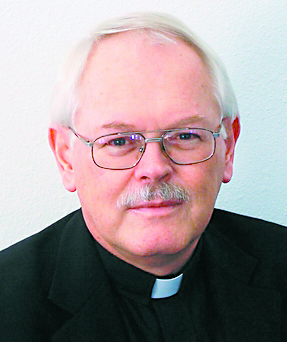IN EXILE
By Father Ron Rolheiser, OMI
What kinds of things help induce mysticism in our lives? I was asked that question recently and this was my immediate, non-reflected, answer: whatever brings tears to your eyes in either genuine sorrow or genuine joy; but that response was predicated on a lot of things.
What is mysticism? What makes for mystical experience?
In the popular mind mysticism is misunderstood badly. We tend to identify mysticism with what’s extraordinary and paranormal, and see it as something for the spiritual elite. For most people, mysticism means spiritual visions and ecstatic experiences which take you outside of normal consciousness.

Mysticism can be that sometimes, though normally it has nothing to do with visions, altered states of consciousness, or states of ecstasy. Rather it has to do with a searing clarity of mind and heart. Mystical experiences are experiences that cut through all the things that normally block us from touching our deepest selves, and they are rare because normally our consciousness is cut off from our deep, true, virginal self by the influence of ego, wound, history, social pressure, ideology, false fear and all the various affectations we don and shed like clothing. Rarely are we ever in touch with our deepest center, without filters, purely; but when we are, that’s what makes for a mystical experience.
Mysticism, as Ruth Burrows defines it, is being touched by God in a way that’s beyond words, imagination and feeling. God, as we know, is Oneness, Truth, Goodness and Beauty. So any time we are genuinely touched by oneness, truth, goodness or beauty, without anything distorting that, we’re having a mystical experience. What might that look like?
Ruth Burrows describes a mystical experience which radically changed her life when she was eighteen years old, a senior at a private high school for young women operated by an order of nuns, on a retreat preparing for graduation, and not very mature. She and one of her friends were not taking this retreat very seriously, passing notes to each other and pulling pranks during the conferences. At a point, their antics were disturbing enough that the nuns pulled them out of the group and had them sit in silence in a chapel, chaperoned by a teacher, whenever the rest of the class was at a conference. At first, Burrows confesses, they continued their joking around, but the hours were long and the silence eventually wore her down. Sitting alone, bored and irritated, a mystical experience graced her, uninvited and unexpected. And it came upon her not as a vision or an ecstasy, but as a moment of searing clarity. At a certain moment, sitting alone, she saw herself with absolute clarity for who she really was, in all her immaturity and in all her goodness. It changed her life. From then on she knew who she was – beyond ego, wound, immaturity, peer pressure, ideology and all affectation. In that moment she knew her deepest self purely (and the only thing that was extraordinary was its extraordinary clarity).
So, what kinds of things might induce mystical experiences in our lives? The short answer: anything that takes you beyond your ego, your wounds, your affectations, and the powerful social pressures within which you breathe, that is, anything that helps put you in touch with who you really are and makes you want to be a better person. And this can be many things. It might be a book you read; it might be the beauty of nature; it might be the sight of a newborn baby, a crying child, a wounded animal, or the face of someone suffering; or it might be what you feel deep down when you receive an expression of love, bless someone, express genuine contrition, or share helplessness. It can be many things.
Several years ago while teaching a course, I assigned the students a number of books to read, among them Christopher de Vinck’s, Only the Heart Knows How to Find Them – Precious Memories for Faithless Time. This is a series of autobiographical essays within which de Vinck simply shares very warmly about his marriage, his children, and his home life. At the end of the semester a young woman, with de Vinck’s book in her hand, said to me: “Father, this is the best book I’ve ever read. I’ve always fancied myself a very free, liberated person and I’ve slept my way through several cities, but now I realize that what I want is what this man has. I want sex to take me home. I want a home. I want the marriage bed. I know now what I need!”
Reading Christopher de Vinck’s book had triggered a mystical experience inside her, not unlike the one described by Ruth Burrows. Reading the Story of a Soul by Therese of Lisieux generally does that for me.
So, here’s my counsel: seek out what does that for you. It doesn’t have to bring tears to your eyes, it just has to point you with searing clarity towards home!
(Oblate Father Ron Rolheiser, theologian, teacher and award-winning author, is President of the Oblate School of Theology in San Antonio, Texas. He can be contacted through his website www.ronrolheiser.com.)
